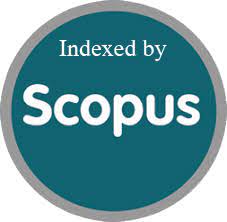Acetylcholinesterase histochemistry: A very useful technique in the diagnosis of Hirschsprung’s disease
DOI:
https://doi.org/10.52783/jns.v11.1026Keywords:
Hirschsprung's disease, Frozen section, Hematoxylin & Eosin staining, Ganglion cells, ParaffinAbstract
Hirschsprung’s disease (HD) is a common congenital paediatric disorder. The gold standard for its diagnosis is the demonstration of the absence of ganglion cells on H&E stained sections from a spastic segment of the bowel, still at times; conclusive diagnosis of HD is difficult. This study was done to assess the accuracy of rapid Hematoxylin & Eosin (H&E) staining and AChE histochemistry in combination for the diagnosis of HD, especially in frozen section specimens. Samples from 36 clinically suspected HD cases were evaluated for the presence or absence of ganglion cells on H&E staining on both fresh-frozen and paraffin-embedded sections, whereas AChE staining was done on frozen sections only. Of the 36 cases of frozen section specimens from the spastic region of the colon, GCs were absent in 28 cases on H&E staining while positive staining patterns on AChE histochemistry were observed in 29 cases. Formalin-fixed paraffin-embedded sections showed the absence of GC on H&E staining in 28 cases. The sensitivity and specificity of frozen sections with rapid H&E were 77.78% and 81.82% while the sensitivity and specificity of AChE histochemistry were 80.56% and 81.82% respectively in the diagnosis of HD. Application of AChE histochemistry as an ancillary technique on frozen sections specimens of HD in combination with rapid H&E staining is very useful for definitive diagnosis of HD.
Downloads
Metrics
References
Agrawal RK, Kakkar N, Vasishta RK, Kumari V, Samujh R, Rao KLN. Acetylcholinesterase histochemistry (AChE)- A helpful technique in the diagnosis and in aiding the operative procedures of Hirschsprung’s disease. Diagn Pathol. 2015; 10:1-8.
Ambartsumyan L, Smith C, Kapur R P. Diagnosis of Hirschsprung Disease. Pediatr Dev Pathol. 2020; 23:8–22.
Kini U, Das K, Babu MK, Mohanty S, Divya P, Saleem KM. Role of rapid modified acetylcholinesterase histochemistry in the diagnosis of Hirschsprungs disease. Indian J Pathol Microbiol. 2010; 53:s127.
Challa VR, Moran JR, Turner CS, Lyerly AD. Histologic diagnosis of Hirschsprung’s disease. The value of concurrent hematoxylin and eosin and cholinesterase staining of rectal biopsies. Am J Clin Pathol. 1987; 88:324–8.
Kiernan JA. Histological and Histochemical Methods: Theory and Practice. 4th ed. Bloxham, UK; Scion 2008.
Takawira C, D’Agostini S, Shenouda S, Persad R, Sergi C. Laboratory procedures update on Hirschsprung disease. J Pediatr Gastroenterol Nutr. 2015; 60:598-605.
Romanska HM, Bishop AE, Brereton RJ, Spitz L, Polak JM. Immunocytochemistry for neuronal markers shows deficiencies in conventional histology in the treatment of Hirschsprung's disease. J Pediatr Surg. 1993; 28:1059-62.
Kapur RP, Raess PW, Hwang S, Winter C. Choline Transporter Immunohistochemistry: An Effective Substitute for Acetylcholinesterase Histochemistry to Diagnose Hirschsprung Disease With Formalin-fixed Paraffin-embedded Rectal Biopsies. Pediatr Dev Pathol. 2017; 20:308-20.
Noblett H. A rectal suction biopsy tube for use in the diagnosis of Hirschsprung’s disease. J Pediatr Surg. 1969; 4:406-9.
Yang WI, Oh JT. Calretinin and microtubule-associated protein-2 (MAP-2) immunohistochemistry in the diagnosis of Hirschsprung’s disease. J Pediatr Surg. 2013; 48:2112–7.
Mohsen R, Jadali F, Gharib At, Tabari A K, Tavassoli A, Mohajerzadeh L. Can We Rely on Frozen Sections of a Rectal Biopsy for One-stage Trans-anal Pull-through Operation in Hirschsprung's Disease?. Iran J Pediatr. 2011; 21:72–6.
Schofield DE, Devine W, Yunis EJ. Acetylcholinesterase-stained suction rectal biopsies in the diagnosis of Hirschsprung’s disease. J Pediatr Gastroenterol Nutr. 1990; 11:221–8.
Nakao M, Suita S, Taguchi T, Hirose R, Shima Y. Fourteen-year experience of Acetylcholinesterase staining for rectal mucosal biopsy in neonatal Hirschsprung's disease. J Pediatr Surg. 2001; 36:1357-63.
Bagdzevičius R, Gelman S, Gukauskienė L, Vaičekauskas V. Application of Acetylcholinesterase histochemistry for the diagnosis of Hirschsprung's disease in neonates and infants: a twenty-year experience. Medicina (Kaunas). 2011; 47:374.
Meier-Ruge WA, Bruder E. Pathology of chronic constipation in pediatric and adult coloproctology. Karger Medical and Scientific Publishers; 2005.
Moore SW, Johnson G. Acetylcholinesterase in Hirschsprung’s disease. Pediatr Surg Int. 2005; 21:255-63.
Pini-Pratoa A, Martucciello G, Jasonnia V. Rectal suction biopsy in the diagnosis of intestinal dysganglionoses: 5-year experience with Solo-RBT in 389 patients. J Pediatr Surg. 2006; 41:1043-8.
de Lorijn F, Kremer LC, Reitsma JB, Benninga MA. Diagnostic tests in Hirschsprung disease: a systematic review. J Pediatr Gastroenterol Nutr. 2006; 42:496-505.
Haricharan RN, Georgeson KE. Hirschsprung disease. Semin Pediatr Surg. 2008; 17:266-175.
Shuiqing Chi, Mijing Fang , Kang Li, Li Yang , Shao-Tao Tang. Diagnosis of Hirschsprung's Disease by Immunostaining Rectal Suction Biopsies for Calretinin, S100 Protein and Protein Gene Product 9.5. J Vis Exp. 2019; 26:e58799.

Published
How to Cite
Issue
Section
License
Copyright (c) 2022 Brijesh K Tripathi, Amrita Ghosh, Vaibhav Pandey, Ajay N Gangopadhyay, Sarita Chawdhary, Shiv P Sharma

This work is licensed under a Creative Commons Attribution 4.0 International License.
You are free to:
- Share — copy and redistribute the material in any medium or format
- Adapt — remix, transform, and build upon the material for any purpose, even commercially.
Terms:
- Attribution — You must give appropriate credit, provide a link to the license, and indicate if changes were made. You may do so in any reasonable manner, but not in any way that suggests the licensor endorses you or your use.
- No additional restrictions — You may not apply legal terms or technological measures that legally restrict others from doing anything the license permits.










